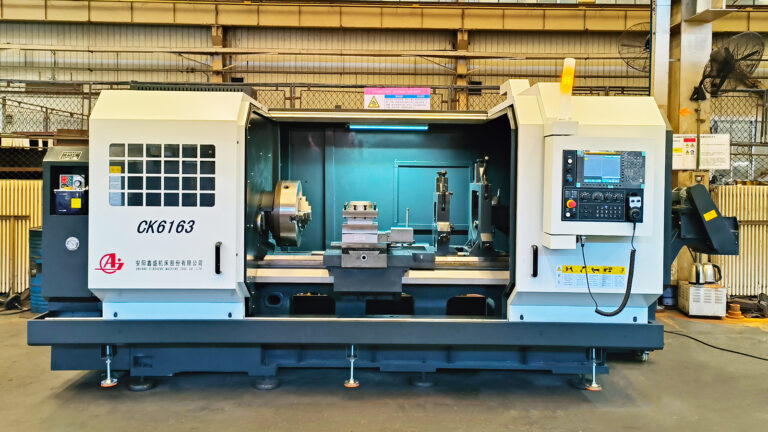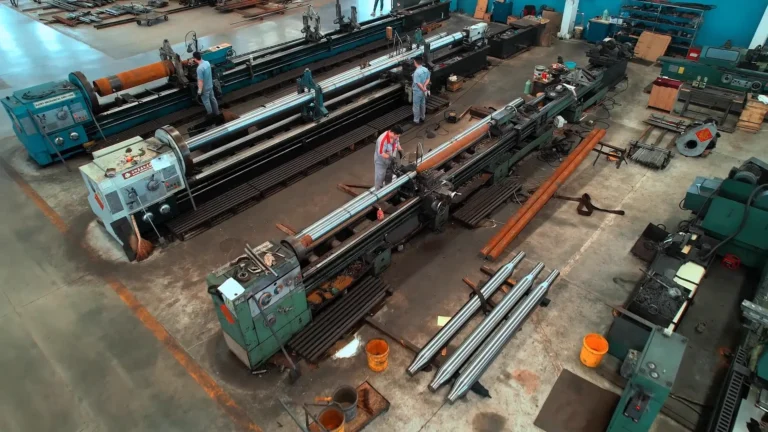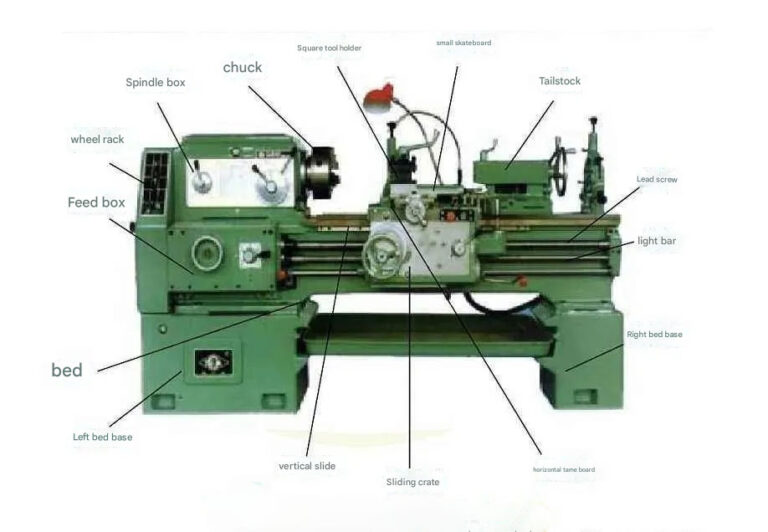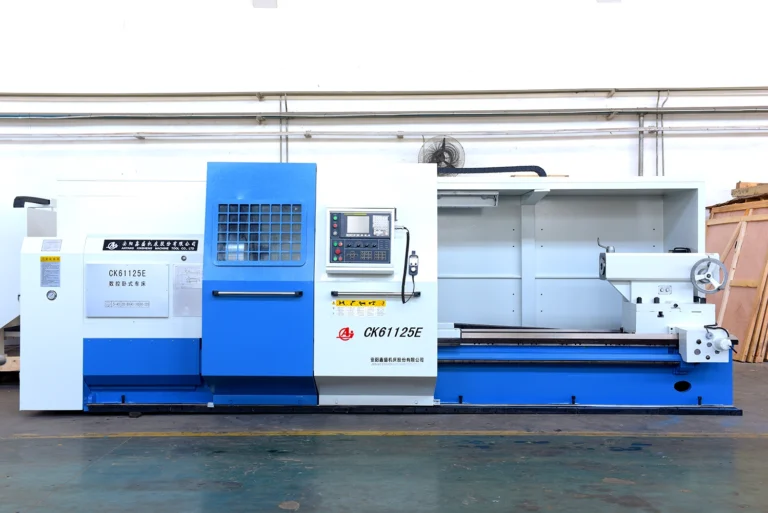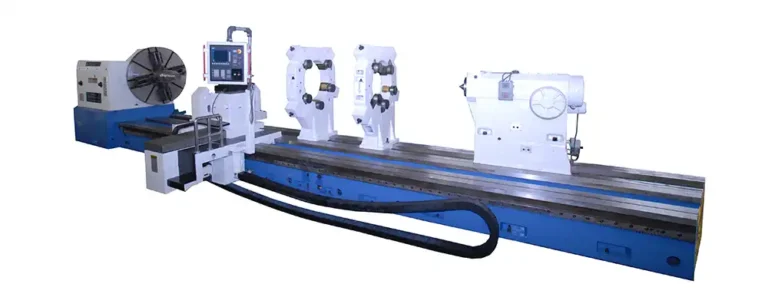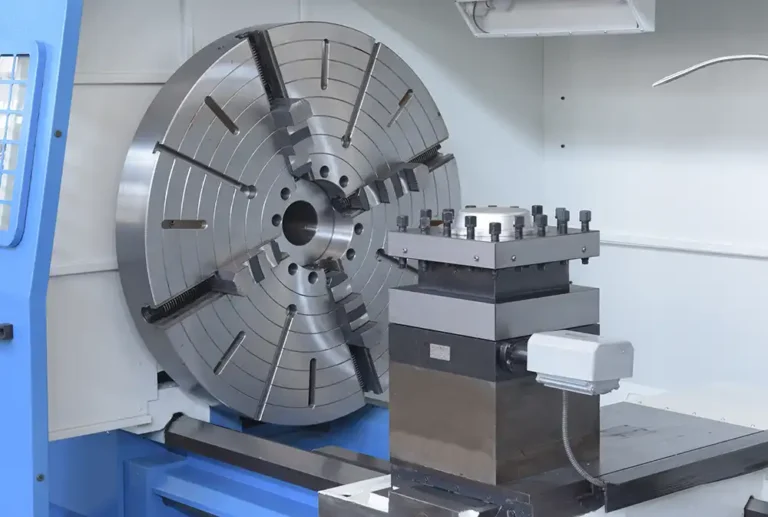How to Properly Maintain a Lathe? What Are the Contents of First and Second-Level Maintenance?
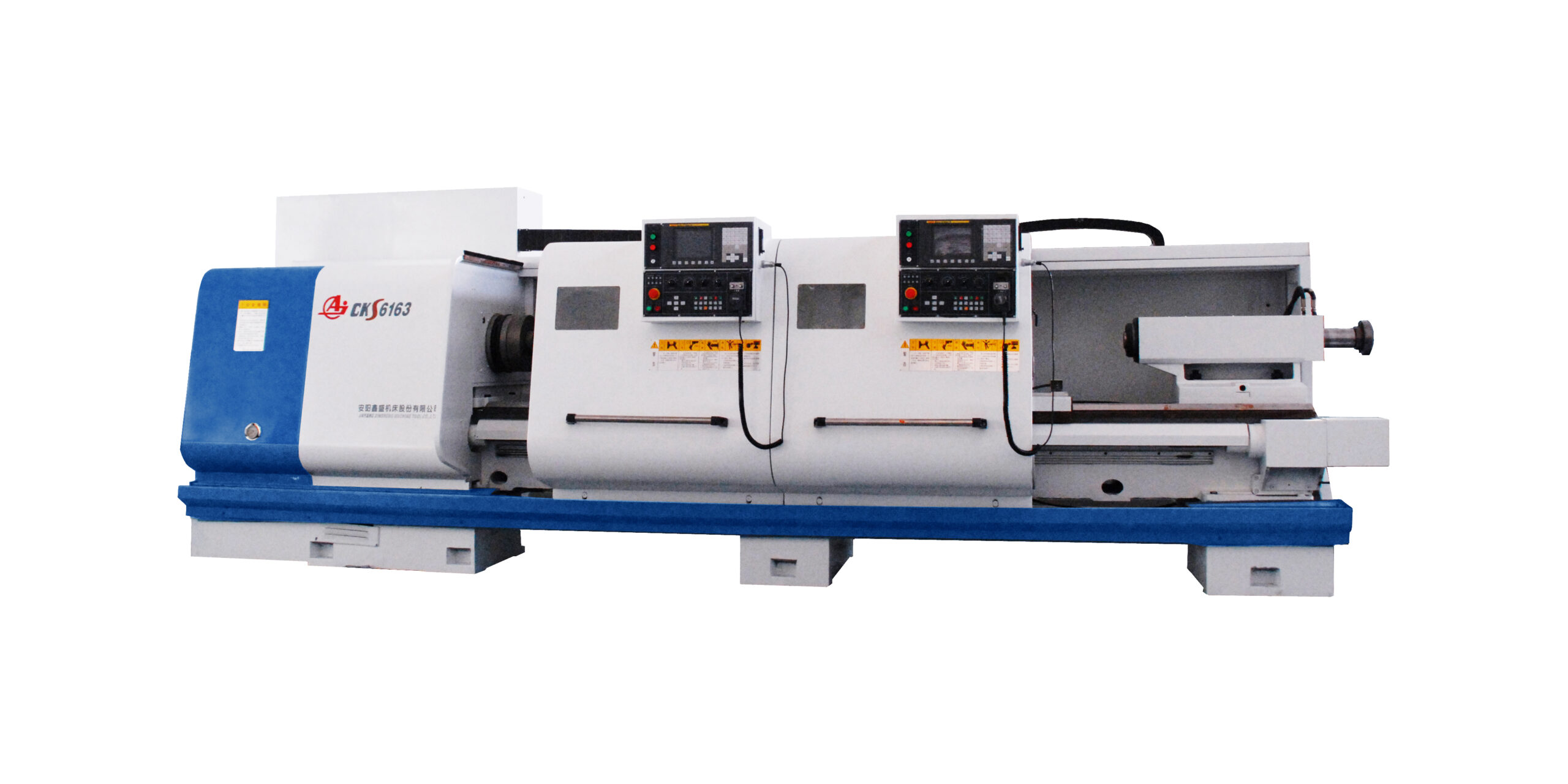
- The oil level in the headstock must not be below the oil mark. Otherwise, the oil pump may suck in air, or the gear mist may be insufficient, causing spindle vibrations, excessive heating of the friction clutch and rolling bearings, and other issues.
- According to the lathe manual, all lubrication system oiling points must be filled with clean lubricating oil on time and in the required amount.
- The oil delivery pipe of the reciprocating oil pump must be cleaned regularly, and the oil window should be checked to ensure it is clear, ensuring that the front bearing and friction clutch of the spindle receive enough lubrication.
- Check the tension of the motor’s triangular belt regularly.
- Before restarting the machine tool after it has been idle for a long time, oil should be applied to the rear bearings and clutch.
- Before starting work every day, let the motor run idle for one minute, then idle all parts of the machine tool to allow lubricating oil to flow to all parts.
- When the spindle speed is very high, the speed should not be suddenly changed under any circumstances.
- Long lead screws should only be used when turning threads.
- When using a tailstock or follow rest, there must be sufficient lubricating oil between the clamping jaws and the workpiece surface.
- No tools, measuring instruments, or other items should be placed on the machine tool’s guide rails, nor should any objects collide with them, to maintain the accuracy of the guide rails.
First-Level Maintenance:
First-level maintenance is performed after the machine tool has accumulated a certain number of hours of operation (e.g., 500 hours). It is mainly carried out by the machine tool operator with guidance from maintenance personnel. Specific maintenance content is as follows (see Table 1-1).
Table 1-1: First-Level Maintenance for Ordinary Lathes (Reference)
| Serial No. | Maintenance Area | Maintenance Content and Requirements |
|---|---|---|
| 1 | External Maintenance | (1) Clean the exterior and covers of the lathe to keep it rust-free and clean. (2) Clean the long lead screw, rods, and control levers. (3) Check and tighten screws, handwheels, and handles. |
| 2 | Headstock Adjustment | (1) Clean the oil filter. (2) Check for looseness in the spindle and cap threads and adjust the locating screws. (3) Adjust the gap of the friction clutch and brake. |
| 3 | Tool Rest and Slide Plate | (1) Clean the tool rest and adjust the inserts, the gap between the small tool rest’s iron inserts. (2) Clean and adjust the gap between the cross-slide, small tool rest’s lead screw, and nut. |
| 4 | Change Gear Box | (1) Clean the gears and bushings, and refill with fresh grease. (2) Adjust the gap between gears. (3) Ensure there is no play in the bushings. |
| 5 | Tailstock | Disassemble and clean the tailstock to keep it clean both inside and outside. |
| 6 | Lubrication | (1) Clean the cooling pump, filter, and cooling tank. (2) Ensure the oil paths are clear, and oil holes, oil lines, and oil felts are free from chips. (3) Check oil quality and maintain it; ensure oil cups are complete and oil windows are clear. |
| 7 | Electrical | (1) Clean the motor and electrical box. (2) Ensure the electrical devices are properly fixed. |
Second-Level Maintenance:
Second-level maintenance is performed after the machine tool has accumulated 2500 hours of operation. The maintenance period lasts 3-4 days and is mainly carried out by maintenance personnel with participation from the machine tool operator.
Because different units have different conditions, the specified hours may vary. For example, some units may require first-level maintenance after 3 months of operation (two shifts), with a work duration of 4-6 hours, mainly for operators, assisted by maintenance personnel. Second-level maintenance is required after one year of operation (two shifts), with the machine down for 3-4 days, primarily for maintenance personnel, with participation from operators. Specific content for second-level maintenance is as follows (see Table 1-2).
Table 1-2: Second-Level Maintenance for Ordinary Lathes (Reference)
| Serial No. | Maintenance Area | Maintenance Content and Requirements |
|---|---|---|
| 1 | Headstock, Change Gear Box, Feed Box, Slide Box, and Slide Plate | (1) Check the guide rail surface for oil stains or burrs. (2) Check the gears, shafts, and bearings in the headstock, change gear box, feed box, and slide box. (3) Inspect the lead screw and nut of the carriage. Replace or repair them as necessary. |
| 2 | Tailstock | Check and repair the tailstock and the taper hole in the tailstock sleeve. |
| 3 | Machine Tool Precision | Restore machine tool accuracy to meet product technical requirements (guides may need scraping if necessary). |
| 4 | Electrical | Maintain the electrical box, clean the motor, and replace parts as necessary. |

